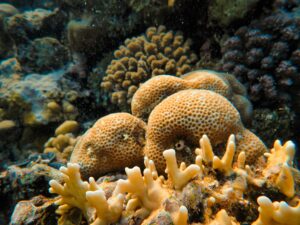Baleen whales have supersonic hearing, pioneering study finds
The groundbreaking study will prove crucial in deepening our understanding of the impacts of human-produced ocean noise on baleen whales' ability to communicate, forage for food, and even reproduce.
A groundbreaking study on the brainwave patterns of marine life has concluded that baleen whales can hear at a far higher frequency than scientists first imagined, transforming our understanding of how the species may be impacted by human-produced ocean noises.
Concerned with answering the question over what impact such human-produced noises are having on creatures that live in the sea, marine scientists from Norway, the US, and Denmark devised a means of testing for hearing of two wild minke whales by analysing their brainwave patterns as they listened to recorded sounds.
These particular test subjects were chosen for their relatively small size compared to other whales. The findings from the study build upon knowledge gained last year when the same team successfully collected the first measures of hearing in baleen whales. Results this week have helped fill in some of the blanks left following last year’s study which will ultimately be used to support more effective baleen whale conservation.
Protection from human-made ocean noise is of great importance. Six species of baleen whales are currently classified as endangered and concerns have been raised previously over what impact human-produced ocean noise is having on their ability to effectively communicate, forage, and navigate the world’s oceans.
Experts from the National Marine Mammal Foundation (NMMF), the Norwegian Defence Research Establishment (FFI), and LKARTS-Norway hope the discoveries made in this latest study will assist ocean noise regulators in developing policy and mitigation practices as well as facilitate industry and military efforts to minimise negative impacts to baleen whales.
“Until now, no direct measures of baleen whales’ hearing had ever been conducted,” said Dr Dorian Houser, NMMF’s director of conservation biology and one of the project’s lead researchers. “We’re incredibly proud to apply our expertise to pioneer methods for safely catching, releasing, and assessing the hearing of these gentle giants.
“This vital information will help establish scientifically based regulatory guidelines to protect all baleen whales, which is our research’s most important accomplishment.”

To record the brain wave patterns of this pair of minke whales, the team first studied their swimming routes through a narrow channel between two islands off the coast of Norway. They then placed netted barriers near the area that directed the whales into a small enclosure. Eventually, the researchers were able to affix electrodes to their heads and used them to record the whales’ brain waves as they responded to sounds played from nearby speakers.
One of the whales was tested for half an hour, the other was tested for an hour and a half. Both were then released back into the wild.
The brain wave recordings mark the first such successful test of its kind. The team discovered – unexpectedly – that minke whales can hear frequencies possibly as high as 45-90 kHz – higher than was previously believed based upon their ear anatomy and the frequencies at which they vocalise. This has numerous implications for what impact human-made noise can have on the species.
“Man-made sound can potentially affect a whale’s hearing, change its behaviour, and interfere with its ability to communicate, look for food, and navigate,” said Dr Petter-Helgevold Kvadsheim, Norway’s lead researcher on the project. “It can potentially hinder a baleen whale’s ability to hear and avoid ships, and we believe chronically high levels of sound might elevate levels of stress hormones that affect a whale’s health and ability to reproduce.”
The study found that the frequency range that minke whales hear best is around 32 kHz. This, Kvadsheim believes, “overlaps with the same frequency that killer whales use when hunting with echolocation. Minke whales can be prey for killer whales, so it makes sense that individuals who hear killer whale echolocation frequencies are more likely to survive and pass on their genes.”
Additional data is now being gathered on minke whale ecology as the research team continues to monitor the movement and migration of the whales using satellite tracking technology. The landmark discovery has been published this week in Science, making it widely available to scientists, conservationists, and federal regulatory agencies.
“This study, although challenging, has provided important data to enhance the science that guides the regulatory process to protect baleen whales from increasing underwater sound levels,” said Dr Frances Gulland, chair of the Marine Mammal Commission whose mission it is to provide independent, science-based oversight of domestic and international policies and actions of US federal agencies addressing human impacts on marine mammals and their ecosystems.


"*" indicates required fields
Printed editions
Current issue
Back issues

Back Issues
Issue 43 Sir David Attenborough’s ‘Ocean’

Back Issues
Issue 41 Holdfast to the canopy
Enjoy so much more from Oceanographic Magazine by becoming a subscriber.
A range of subscription options are available.








